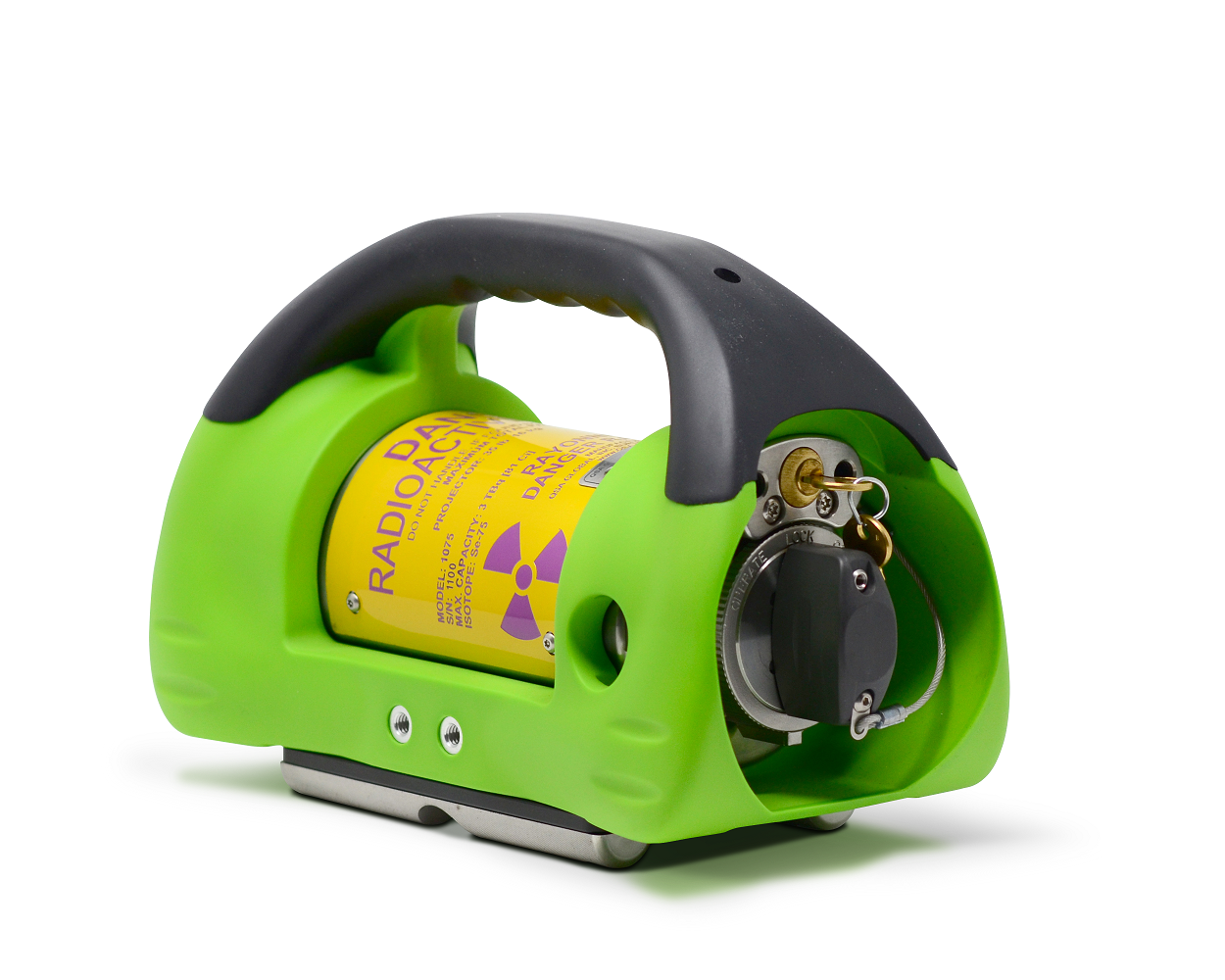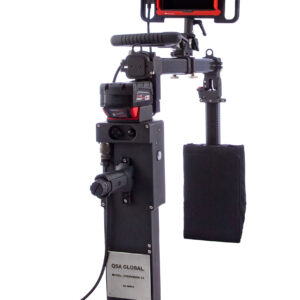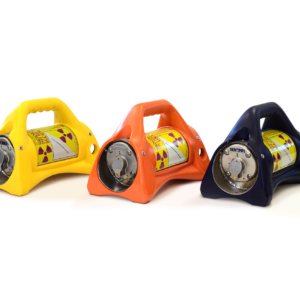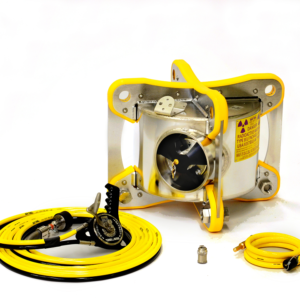SENTINEL™ 1075 SCARPro
Experience 24/7 SCAR Productivity.
Perform Small Controlled Area Radiography (SCAR) radiographic inspections in close proximity to other trades, nucleonic process control equipment, and critical safety systems, such as visual flame detectors, to minimize the impact of RT on continuing operations or outage schedules.
With the SENTINEL™ 1075 SCARPro, you can obtain up to 98% reduction in exclusion zones compared to conventional radiography techniques.
Minimize Exclusion Zones
With the SENTINEL 1075 SCARPro, you can obtain up to 98% reduction in exclusion zones compared to conventional radiography techniques.
Utilizing FlexShield radiation blankets, guide tube shields, and scatter shields with proper technique, you can achieve exclusion zones as small as 3 to 6 feet (1 to 2 meters) for demanding applications or 10 to 15 feet (3 to 5 meters) for typical applications required by clients to realize the SCAR value.
QSA Global, Inc.’s sales team and local distributors provide custom-tailored solutions to help your clients maximize turnaround efficiency, eliminate interference from radiographic testing on nucleonic process control gauges, and meet exclusion zone requirements.
SCAR Production: Turnarounds & Outages
During turnarounds and outages, traditional gamma radiography is either performed in shooting windows totaling only 1-2 hours in a 12-hour shift or other trades such as welders and electricians must be cleared from the exclusion zone while radiography is performed.
The SCAR Radiography technique utilizing the SENTINEL 1075 SCARPro eliminates the need for shooting windows or impacting other trades. The SENTINEL 1075 SCARPro enables continuous 24/7 gamma radiography inspections maximizing inspection productivity and accelerating your turnaround.
Nucleonic Gauges & Safety Systems
Gamma rays, x-rays, and scatter radiation from radiographic testing can interfere with nucleonic process control gauges and critical safety systems such as visual flame detectors (VFDs) commonly found in oil refineries, petrochemical plants, and power plants. Nucleonic gauges utilize radiation in myriad process control applications including measuring process fluid density, locating phase interfaces, and level switches. UV VFDs detect UV radiation from fires and can trigger fire suppression systems. These systems often cannot differentiate the radiation they are designed to detect from radiation resulting from radiographic testing. As a result, critical processes may need to be manually monitored, operated without real-time process information, or shut down entirely while traditional radiographic testing (RT) is being performed.
The SCAR radiography technique allows you to perform RT in close proximity to these sensor systems without risking interfering with process measurements or generating false alarms in critical safety systems.



